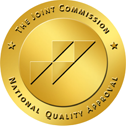
Drug and Alcohol Interventions should never be confrontational. Emotions may span the entire spectrum of human experience from grief, helplessness, and anger, to disbelief, denial, and even joking about their plight. As a result, there’s a lot to know about how to conduct an intervention.
Indeed, the first rule when considering an intervention is to dispense the idea of confrontation and replace it with the concept of presentation and education. Communication is, of course, absolutely paramount, and it might fairly be said that successful interventions are studies in the art of diplomacy. Most important is bearing in mind that ultimately when performed correctly, an intervention is an offering of love to the person who is in need of help.
What an Intervention Really Is – and Isn’t
 All the things you should know about how to conduct an intervention for drug and alcohol addiction
All the things you should know about how to conduct an intervention for drug and alcohol addiction
Most people who find themselves considering an intervention are usually desperate, afraid, and backed against a wall. The idea of coordinating an intervention is usually the last resort after numerous attempts at communicating with the addict have failed. There is often a sense of hopelessness that an intervention will even work. In many scenarios, the thought of doing an intervention carries with it the doubt that even trying one will worsen the situation. But an intervention, if done properly and respectfully, will help.
Interventions merely interrupt the skipping record of addiction.
An intervention will help because it’s designed to be an interruption. It’s not something to be undertaken lightly, but when done correctly, it’s not even a confrontation. All an intervention is designed to do is create a chance for change. The intervention represents a chance to interrupt the addict’s behavior so that the needle of the addict’s record might stop the destructive skip of addictive pathology and start playing a healthy tune of life again.
Interventions are a presentation – not a confrontation.
Interventions are at their core, a presentation. A presentation of love and concern for the addict. The presenting of information that offers an opportunity. An opportunity for change.
Interventions don’t make it any worse.
Intervention can neither guarantee change, nor make things worse. This is the most important thing to really understand when considering intervening on an alcoholic or addict. Interventions represent a chance for things to get better, where there is no chance otherwise. The question is really only, “Do you want to have that chance?” By its very nature intervention is a difficult process. Directly related to an addicts or alcoholics level of denial, professional interventions are often the last resort for families and loved ones who know first hand the powerful grip of addiction.
Unfortunately, there is no guarantee that once you know how to conduct an intervention that it will be successful. At least, if your definition of success is that the afflicted enrolls immediately in a treatment center. But that’s not really what an intervention is about. An intervention is as much about freeing those that care from the question, “Have I done all that I can do?”, as it is about getting someone to say they will go to a program. In truth, this is the most important part of an intervention working. If you act out of desperation, with the sole hope that the addict or alcoholic will go to treatment, then you’re going about it in an ineffective way.
How to Conduct an Intervention
There are several stages to a successful alcohol intervention or drug intervention what will hopefully all lead towards medical detox. In most situations, it is advisable to first intervene with family members, loved ones, or caring individuals before engaging with a professional interventionist.
Identification And Intention
Identify what your emotional state is in relationship to your loved one’s chemical dependency issues. Are you angry? Are you desperate? Sad? Concerned? (Remember: It is impossible to be angry about something you don’t care about) Create a personal intention to help your loved one by having a conversation with them about their chemical dependency issues. (If you don’t do something to help, then its possible that no one else will either.)
Investigate And Research
Investigate drug treatment centers. Identify the facility you would like to enroll your loved one in. Utilize the facility for support with any questions you might have about the pending conversation. Whenever possible, a professional intervention can greatly increase the chances of an initial conversation resulting in an appropriate placement for drug and alcohol treatment.
The Conversation
Remain calm. Be focused on your intention to help. Of course, any conversation about chemical dependency should come from a place of love and concern. Talk quietly with loved ones about your intention to help the person suffering. Ask them if they are willing to participate in supporting you stage a conversation with the person suffering from chemical dependency. Choose an appropriate place to have the conversation. Remember that the stage should be set with the idea of creating a safe environment for talking. The venue should be private and free of distractions.
Have the conversation. Be clear that you are not angry. Share your solidarity and support for the person suffering. Recall positive memories you have shared with your loved one. Talk about how you want the old person back. Be sure to use “I” statements. Say, “I have observed your struggle lately” or, “I notice that you often appear unhappy.” Talk about how things seem to be upside down for your loved one. Say, “We know a place that can help.”
The Result
If your loved one is willing to go to a facility, finalize the arrangements for their enrollment. (It is important to capitalize on the decision to go. A lot can happen prior to admission to a drug treatment center. Do whatever is necessary to expedite their safe admission; transportation, helping pack them, etc.) Do not set any significant consequences if there is a lack of motivation to enter a drug treatment center. Do not get into a power struggle with the person suffering. If they refuse to go, give them some time to think about the love and concern you have expressed. Say that you would like to revisit this conversation in a couple days. See whether there are any positive changes or internal shifts that are made during that time by the person suffering from chemical dependency. Perhaps they might consider an intensive outpatient program.
Methods on How to Conduct an Intervention And Entering Treatment
There are as many different styles of interventions (for example The Family Systemic Model, The Invitational Model, The Motivational Model) as there are people in need of them and we recommend you do more research before embarking on one. There is no perfect answer to when an intervention is appropriate, although it might be the most important conversation you have on behalf of the addict you’re trying to help. People are different, and the ways in which they process information and the manner in which this information influence their development, make generalizations dangerous.
There exist situations in which an addict becomes so psychologically unstable that they pose a danger to themselves or to others, and outside measures become an absolute necessity. In cases such as this, cases in which a psych hold might be employed (where the addict is confined against their will in some medical or psychiatric facility for a 3 day period of observation), during which time stabilization can occur. Education and awareness are the first steps to acquiring help. Hopefully, this article will assist in giving you a foundation of knowledge that will make selecting the correct course easier to determine.
To learn more about how to conduct an intervention, reach out to Casa Palmera. Our caring staff can help you get your loved one the treatment they need. Contact us today.




